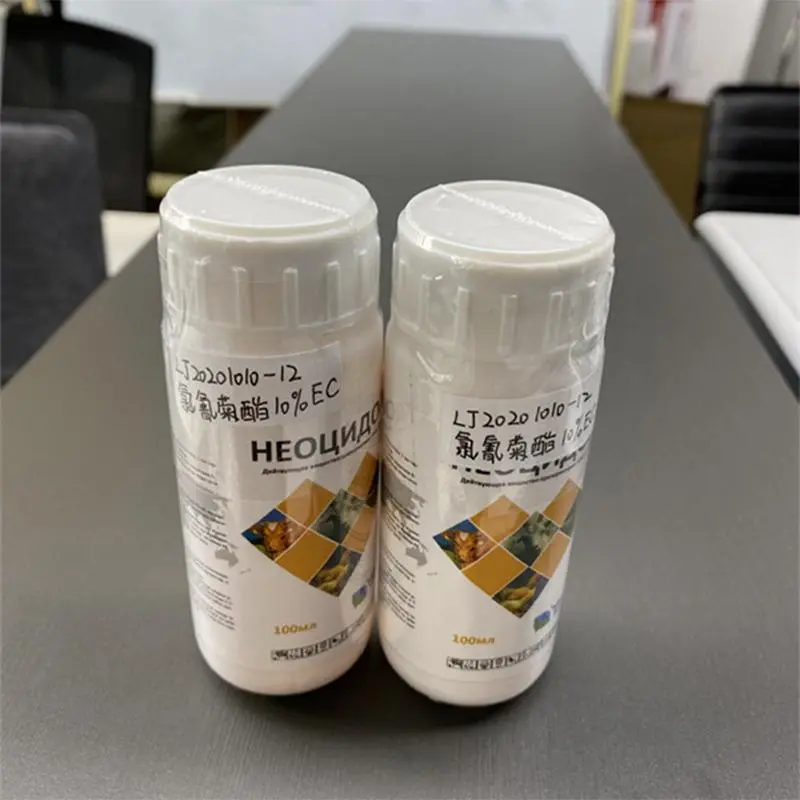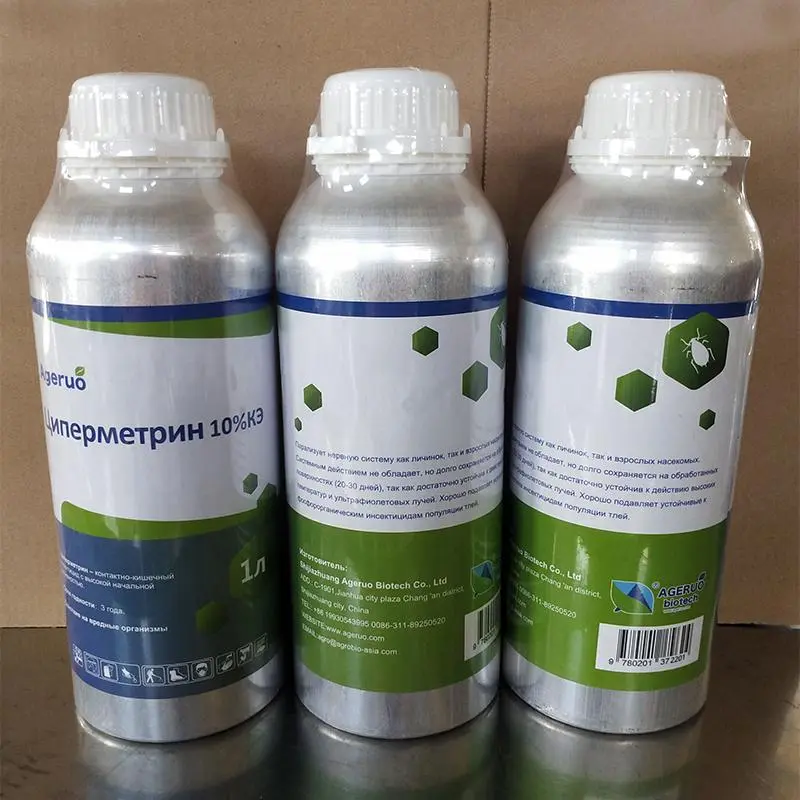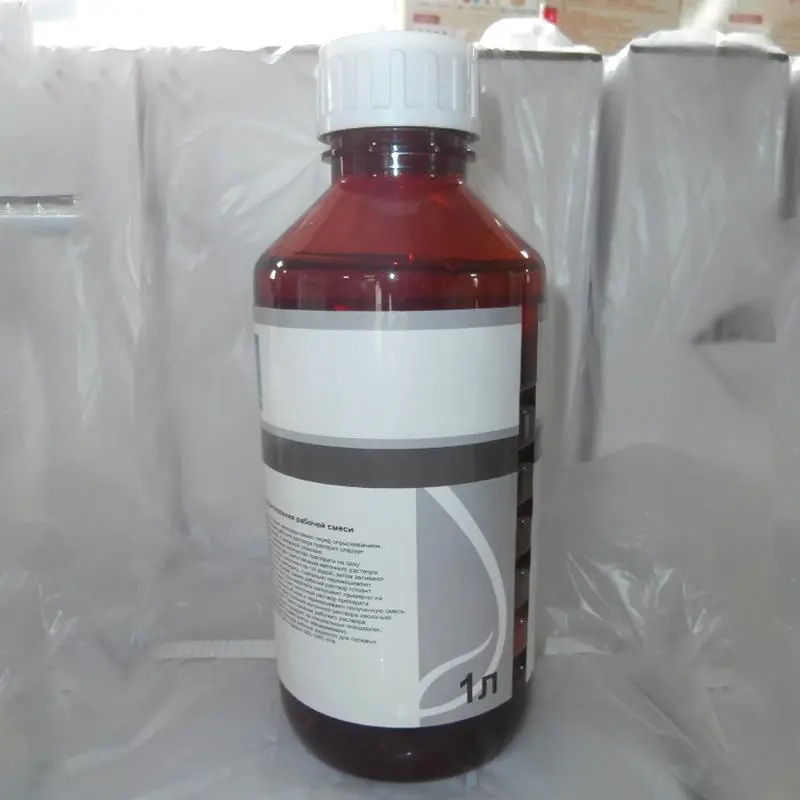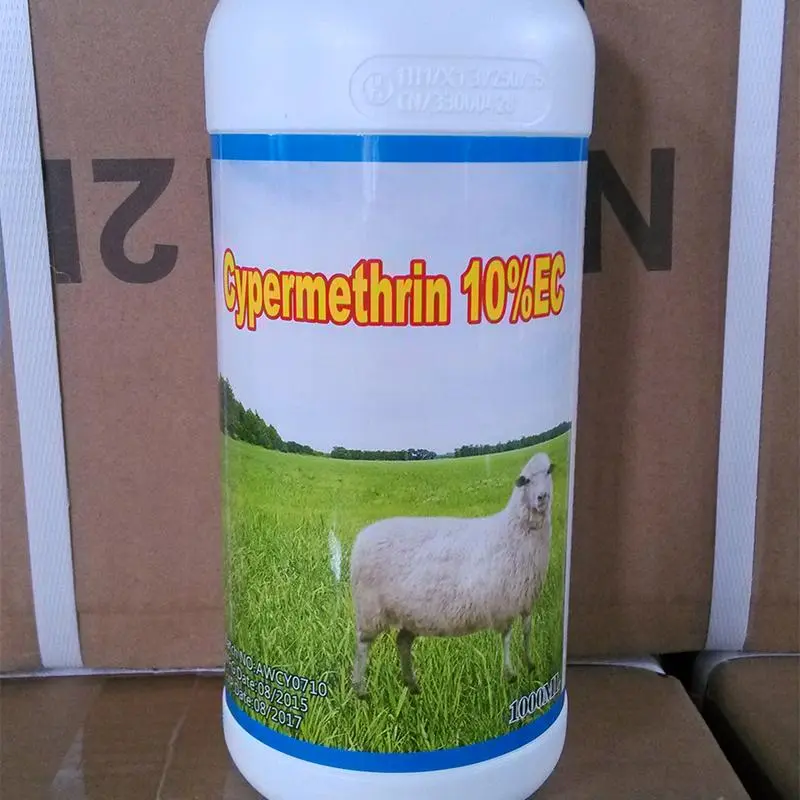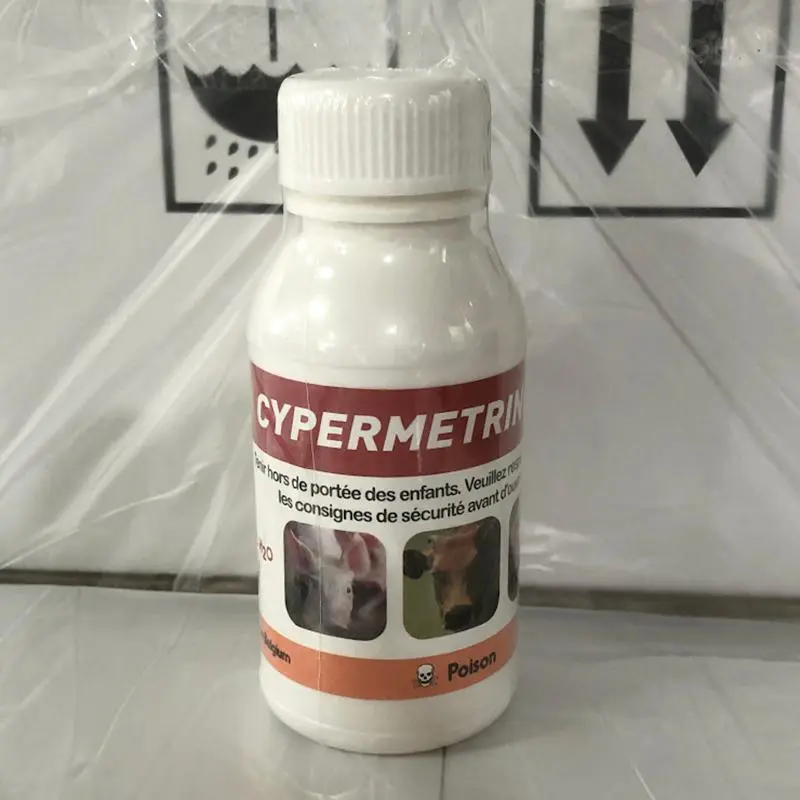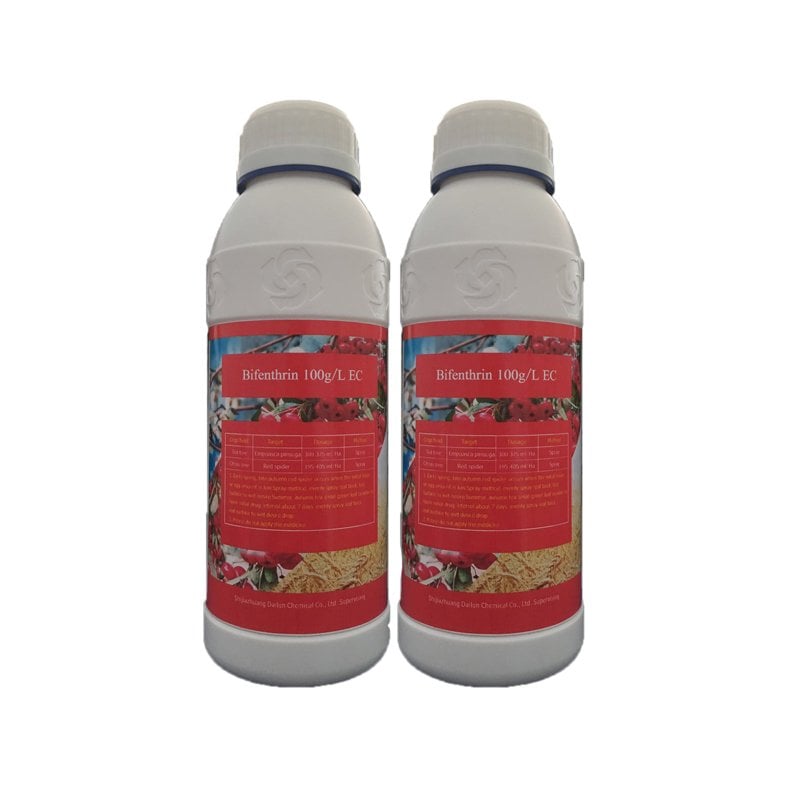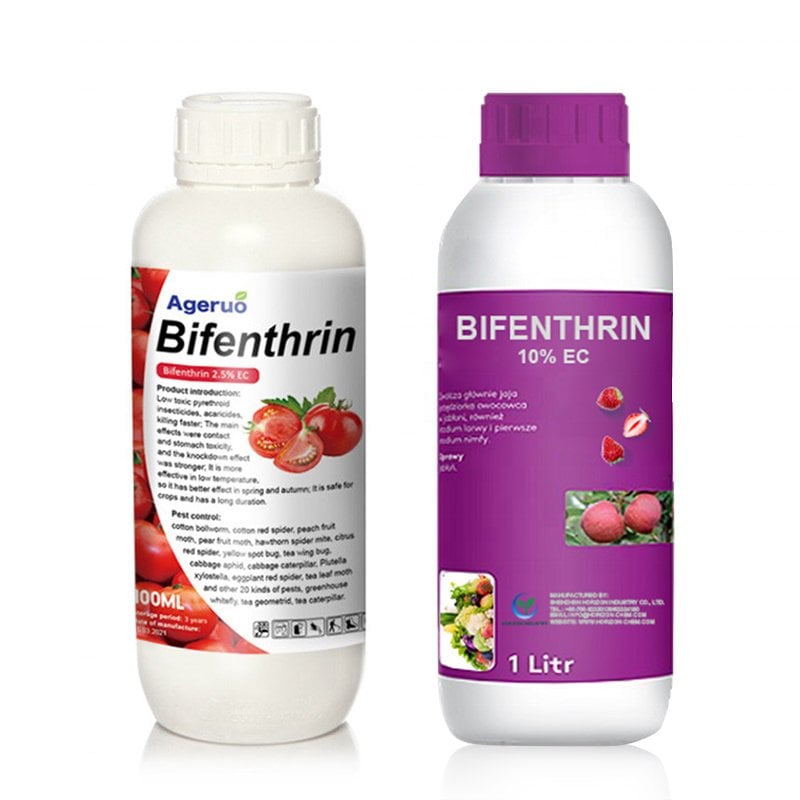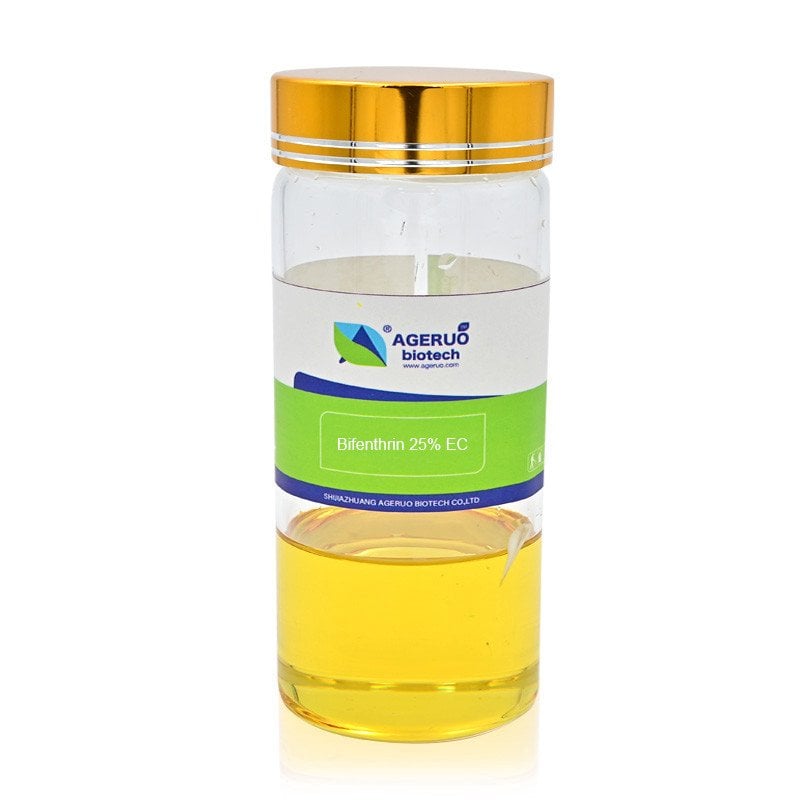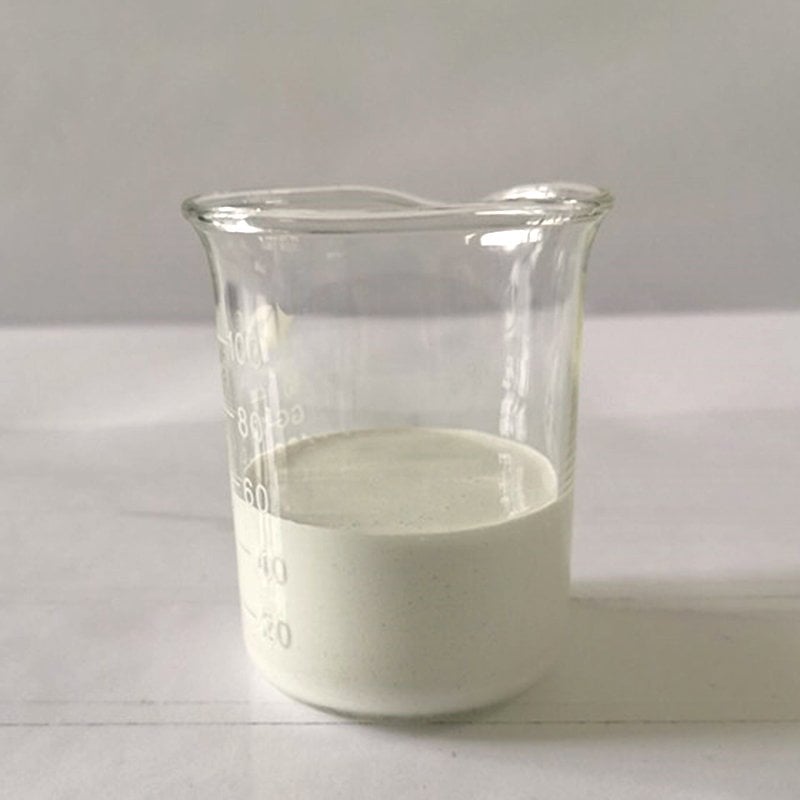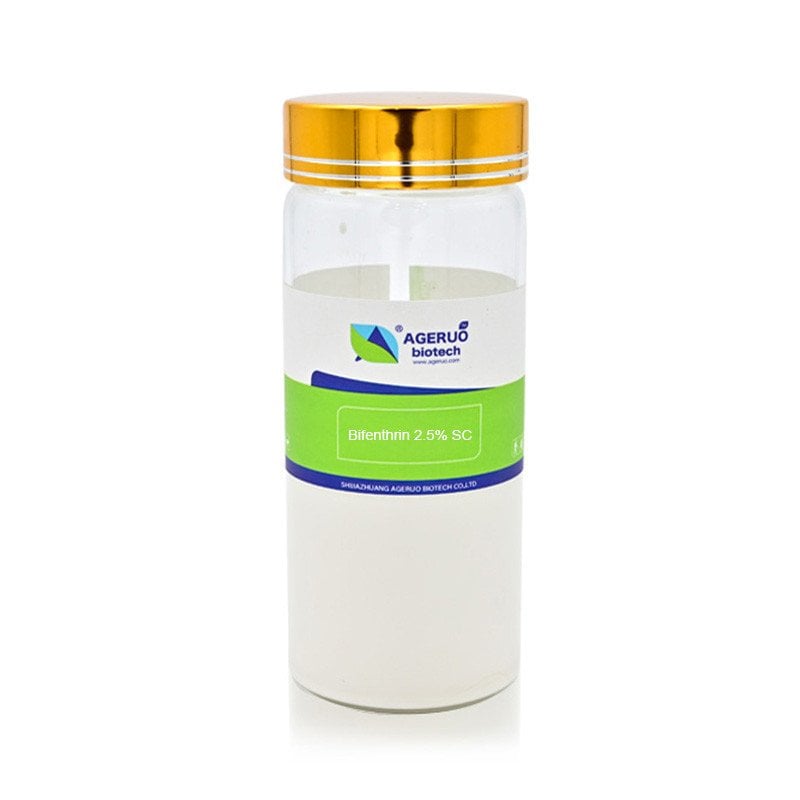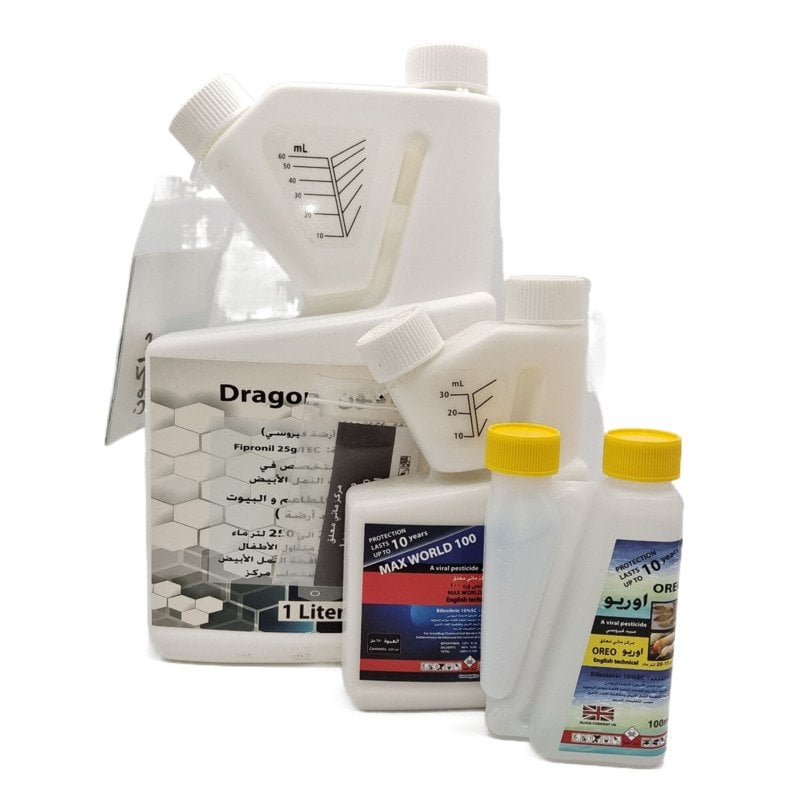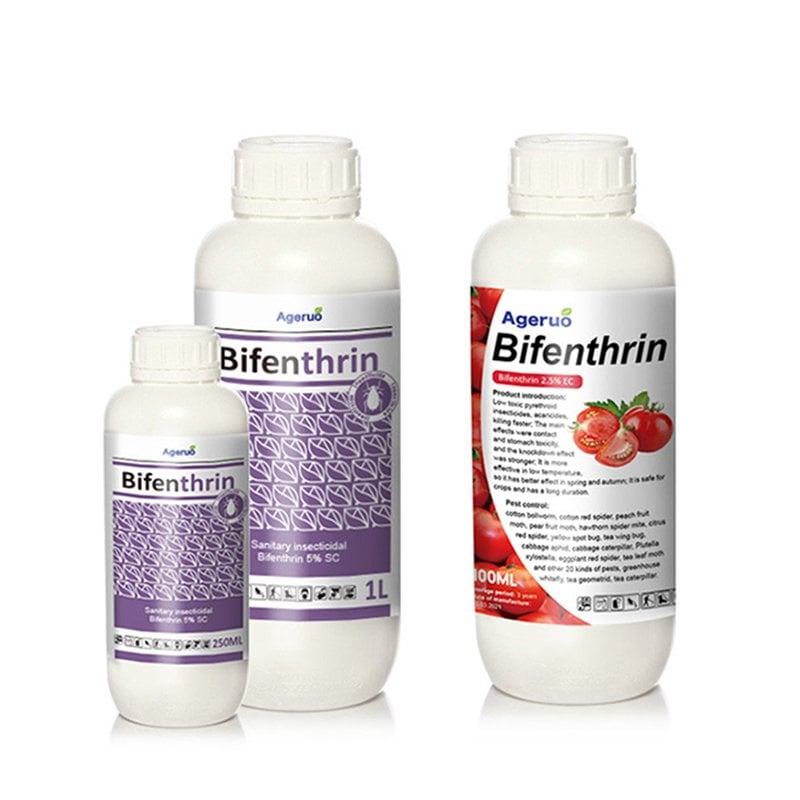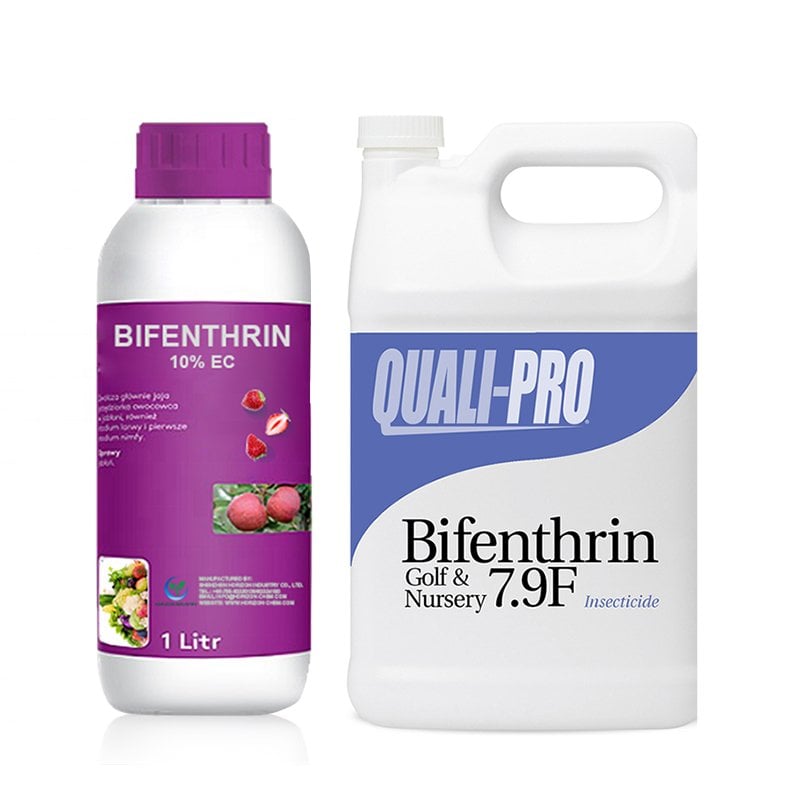Cypermethrin vs Bifenthrin
A Comprehensive Comparison for Pest Control Solutions
Cypermethrin and Bifenthrin are two widely used pyrethroid insecticides that offer reliable pest control across a variety of applications. While both insecticides belong to the same chemical class, they differ in their chemical properties, residual activity, effectiveness, and ideal applications. This article will explore the differences and similarities between Cypermethrin and Bifenthrin, helping you make an informed decision about which insecticide is best suited for your needs.
What is Cypermethrin?
Cypermethrin is a synthetic pyrethroid insecticide commonly used for controlling a broad spectrum of pests in agricultural, commercial, and residential settings. It is effective against many insects, including flies, mosquitoes, termites, and agricultural pests like aphids and caterpillars. Cypermethrin works by disrupting the insect’s nervous system, causing overstimulation, paralysis, and ultimately death.
Key Features of Cypermethrin:
- Mechanism of Action: Cypermethrin affects the insect’s nervous system by inhibiting sodium ion channels, leading to hyperexcitation and death.
- Applications: Used in agriculture, public health (mosquito control), household pest control, and forestry.
- Residual Activity: Medium-lasting, typically ranging from a few days to several weeks depending on environmental factors.
- Environmental Impact: Can be toxic to aquatic organisms and beneficial insects such as bees. It requires careful application to minimize risks to the environment.
What is Bifenthrin?
Bifenthrin is another synthetic pyrethroid, well-known for its effectiveness in controlling a variety of pests, including ants, termites, and agricultural pests. It is often used in both large-scale agricultural operations and residential settings. Bifenthrin shares a similar mode of action with Cypermethrin, but it is often preferred for its longer residual activity.
Key Features of Bifenthrin:
- Mechanism of Action: Like Cypermethrin, Bifenthrin targets sodium channels in the insect’s nervous system, causing paralysis and death.
- Applications: Commonly used in agriculture, residential pest control (termites, ants), and public health applications.
- Residual Activity: Long-lasting, with a residual period of several weeks to months.
- Environmental Impact: Toxic to aquatic life and pollinators. Caution is required during application to avoid unintended environmental effects.
Cypermethrin vs Bifenthrin: A Quick Comparison
| Feature | Cypermethrin | Bifenthrin |
|---|---|---|
| Chemical Class | Pyrethroid | Pyrethroid |
| Mechanism of Action | Disrupts sodium ion flow in insect nerves | Disrupts sodium ion flow in insect nerves |
| Primary Applications | Agriculture, Public Health, Household | Agriculture, Public Health, Household |
| Residual Activity | Medium-lasting (days to weeks) | Long-lasting (weeks to months) |
| Environmental Impact | Toxic to aquatic organisms and bees | Toxic to aquatic organisms and bees |
| Effectiveness | Rapid control, short to medium-term | Long-term control, broad-spectrum |
Cypermethrin vs Bifenthrin: In-Depth Comparison
1. Chemical Properties and Mode of Action
Both Cypermethrin and Bifenthrin are pyrethroids, meaning they are synthetic chemicals designed to mimic the insecticidal properties of naturally occurring pyrethrins derived from chrysanthemums. Both insecticides work by interfering with sodium ion channels in insect nerves, causing overstimulation of the nervous system, paralysis, and ultimately death.
However, there are differences in their chemical structure that affect their stability and persistence in the environment. Bifenthrin is more fluorinated, which contributes to its longer residual activity compared to Cypermethrin. This makes Bifenthrin more effective for long-term pest management, while Cypermethrin is generally preferred for situations requiring faster knockdown and control.
- Cypermethrin: Quick knockdown and effective for rapid pest elimination.
- Bifenthrin: Provides longer-lasting protection, making it ideal for ongoing pest management.
2. Applications and Effectiveness
- Cypermethrin is widely used for quick pest control, especially in agricultural settings and for controlling mosquitoes, flies, and other pests. Its fast action makes it ideal for public health applications, such as mosquito control, as well as for quick treatment in homes and commercial spaces.
- Bifenthrin, with its extended residual activity, is particularly effective for long-term control. It is widely used for termite and ant control, as well as in agriculture for managing pests like aphids, whiteflies, and mites. Bifenthrin is also effective in providing long-lasting protection in residential areas.
3. Environmental Impact
Both Cypermethrin and Bifenthrin can have a significant environmental impact if not used properly. Both are toxic to aquatic organisms and beneficial insects such as bees, which makes proper application techniques and safety measures critical. However, Bifenthrin is generally more persistent in the environment, increasing the risk of environmental contamination if misused.
- Cypermethrin: Less persistent in the environment, though still toxic to aquatic life and pollinators. Requires careful application to avoid damage.
- Bifenthrin: More persistent, leading to a higher potential for environmental risks if over-applied.
4. Effectiveness for Short-Term vs Long-Term Control
- Cypermethrin is best for short-term pest control when rapid action is needed, such as for controlling mosquitoes or flies in a residential or commercial setting.
- Bifenthrin is more suitable for long-term pest control due to its extended residual activity, making it ideal for agricultural pest management, termite control, and maintaining long-lasting protection in homes.
Can You Mix Bifenthrin and Cypermethrin?
The question of whether Bifenthrin and Cypermethrin can be mixed often arises when users are seeking to enhance the effectiveness of pest control. While both insecticides are pyrethroids and share similar modes of action, mixing them should be done with caution.
Potential Benefits of Mixing Bifenthrin and Cypermethrin:
- Broad-Spectrum Control: Mixing these two insecticides could potentially provide broader control against a wider range of pests, as their effectiveness varies slightly depending on the insect species.
- Faster Knockdown and Longer Residual: The combination of Cypermethrin’s quick knockdown and Bifenthrin’s long-lasting residual activity could result in a more comprehensive pest control solution.
Considerations When Mixing:
- Overlapping Mode of Action: Both Bifenthrin and Cypermethrin work by targeting the same mechanism in the insect’s nervous system. While they may not interfere with each other, using both simultaneously increases the risk of insecticide resistance. Overuse of similar modes of action can lead to the development of resistance in pest populations.
- Toxicity to Non-Target Species: Mixing insecticides can amplify their toxicity, especially to aquatic organisms and pollinators. Care should be taken to apply the mix in a manner that minimizes environmental harm.
- Manufacturer Guidelines: Always check the manufacturer’s recommendations and product labels before mixing insecticides. Some formulations may be designed for specific use cases, and mixing without guidance could reduce the efficacy or increase risks.
Conclusion:
It is technically possible to mix Bifenthrin and Cypermethrin, but it should be done carefully and only when necessary. Always adhere to recommended application rates, and ensure that the combination is suitable for the specific pest management task at hand.
Conclusion: Which Insecticide Is Right for Your Needs?
Both Cypermethrin and Bifenthrin are highly effective pyrethroids, each with its strengths and ideal applications:
- For Rapid, Short-Term Pest Control: Cypermethrin is the ideal choice due to its quick knockdown and effectiveness against a wide range of pests.
- For Long-Term, Ongoing Pest Management: Bifenthrin offers extended residual activity, making it better suited for applications that require sustained pest control, such as agricultural pest management and termite control.
Understanding the unique properties and applications of Cypermethrin and Bifenthrin will help you make an informed decision and optimize your pest control strategy.
A Comprehensive Comparison for Pest Control Solutions
Cypermethrin and Bifenthrin are two widely used pyrethroid insecticides that offer reliable pest control across a variety of applications. While both insecticides belong to the same chemical class, they differ in their chemical properties, residual activity, effectiveness, and ideal applications. This article will explore the differences and similarities between Cypermethrin and Bifenthrin, helping you make an informed decision about which insecticide is best suited for your needs.
What is Cypermethrin?
Cypermethrin is a synthetic pyrethroid insecticide commonly used for controlling a broad spectrum of pests in agricultural, commercial, and residential settings. It is effective against many insects, including flies, mosquitoes, termites, and agricultural pests like aphids and caterpillars. Cypermethrin works by disrupting the insect’s nervous system, causing overstimulation, paralysis, and ultimately death.
Key Features of Cypermethrin:
- Mechanism of Action: Cypermethrin affects the insect’s nervous system by inhibiting sodium ion channels, leading to hyperexcitation and death.
- Applications: Used in agriculture, public health (mosquito control), household pest control, and forestry.
- Residual Activity: Medium-lasting, typically ranging from a few days to several weeks depending on environmental factors.
- Environmental Impact: Can be toxic to aquatic organisms and beneficial insects such as bees. It requires careful application to minimize risks to the environment.
What is Bifenthrin?
Bifenthrin is another synthetic pyrethroid, well-known for its effectiveness in controlling a variety of pests, including ants, termites, and agricultural pests. It is often used in both large-scale agricultural operations and residential settings. Bifenthrin shares a similar mode of action with Cypermethrin, but it is often preferred for its longer residual activity.
Key Features of Bifenthrin:
- Mechanism of Action: Like Cypermethrin, Bifenthrin targets sodium channels in the insect’s nervous system, causing paralysis and death.
- Applications: Commonly used in agriculture, residential pest control (termites, ants), and public health applications.
- Residual Activity: Long-lasting, with a residual period of several weeks to months.
- Environmental Impact: Toxic to aquatic life and pollinators. Caution is required during application to avoid unintended environmental effects.
Cypermethrin vs Bifenthrin: A Quick Comparison
| Feature | Cypermethrin | Bifenthrin |
|---|---|---|
| Chemical Class | Pyrethroid | Pyrethroid |
| Mechanism of Action | Disrupts sodium ion flow in insect nerves | Disrupts sodium ion flow in insect nerves |
| Primary Applications | Agriculture, Public Health, Household | Agriculture, Public Health, Household |
| Residual Activity | Medium-lasting (days to weeks) | Long-lasting (weeks to months) |
| Environmental Impact | Toxic to aquatic organisms and bees | Toxic to aquatic organisms and bees |
| Effectiveness | Rapid control, short to medium-term | Long-term control, broad-spectrum |
Cypermethrin vs Bifenthrin: In-Depth Comparison
1. Chemical Properties and Mode of Action
Both Cypermethrin and Bifenthrin are pyrethroids, meaning they are synthetic chemicals designed to mimic the insecticidal properties of naturally occurring pyrethrins derived from chrysanthemums. Both insecticides work by interfering with sodium ion channels in insect nerves, causing overstimulation of the nervous system, paralysis, and ultimately death.
However, there are differences in their chemical structure that affect their stability and persistence in the environment. Bifenthrin is more fluorinated, which contributes to its longer residual activity compared to Cypermethrin. This makes Bifenthrin more effective for long-term pest management, while Cypermethrin is generally preferred for situations requiring faster knockdown and control.
- Cypermethrin: Quick knockdown and effective for rapid pest elimination.
- Bifenthrin: Provides longer-lasting protection, making it ideal for ongoing pest management.
2. Applications and Effectiveness
- Cypermethrin is widely used for quick pest control, especially in agricultural settings and for controlling mosquitoes, flies, and other pests. Its fast action makes it ideal for public health applications, such as mosquito control, as well as for quick treatment in homes and commercial spaces.
- Bifenthrin, with its extended residual activity, is particularly effective for long-term control. It is widely used for termite and ant control, as well as in agriculture for managing pests like aphids, whiteflies, and mites. Bifenthrin is also effective in providing long-lasting protection in residential areas.
3. Environmental Impact
Both Cypermethrin and Bifenthrin can have a significant environmental impact if not used properly. Both are toxic to aquatic organisms and beneficial insects such as bees, which makes proper application techniques and safety measures critical. However, Bifenthrin is generally more persistent in the environment, increasing the risk of environmental contamination if misused.
- Cypermethrin: Less persistent in the environment, though still toxic to aquatic life and pollinators. Requires careful application to avoid damage.
- Bifenthrin: More persistent, leading to a higher potential for environmental risks if over-applied.
4. Effectiveness for Short-Term vs Long-Term Control
- Cypermethrin is best for short-term pest control when rapid action is needed, such as for controlling mosquitoes or flies in a residential or commercial setting.
- Bifenthrin is more suitable for long-term pest control due to its extended residual activity, making it ideal for agricultural pest management, termite control, and maintaining long-lasting protection in homes.
Can You Mix Bifenthrin and Cypermethrin?
The question of whether Bifenthrin and Cypermethrin can be mixed often arises when users are seeking to enhance the effectiveness of pest control. While both insecticides are pyrethroids and share similar modes of action, mixing them should be done with caution.
Potential Benefits of Mixing Bifenthrin and Cypermethrin:
- Broad-Spectrum Control: Mixing these two insecticides could potentially provide broader control against a wider range of pests, as their effectiveness varies slightly depending on the insect species.
- Faster Knockdown and Longer Residual: The combination of Cypermethrin’s quick knockdown and Bifenthrin’s long-lasting residual activity could result in a more comprehensive pest control solution.
Considerations When Mixing:
- Overlapping Mode of Action: Both Bifenthrin and Cypermethrin work by targeting the same mechanism in the insect’s nervous system. While they may not interfere with each other, using both simultaneously increases the risk of insecticide resistance. Overuse of similar modes of action can lead to the development of resistance in pest populations.
- Toxicity to Non-Target Species: Mixing insecticides can amplify their toxicity, especially to aquatic organisms and pollinators. Care should be taken to apply the mix in a manner that minimizes environmental harm.
- Manufacturer Guidelines: Always check the manufacturer’s recommendations and product labels before mixing insecticides. Some formulations may be designed for specific use cases, and mixing without guidance could reduce the efficacy or increase risks.
Conclusion:
It is technically possible to mix Bifenthrin and Cypermethrin, but it should be done carefully and only when necessary. Always adhere to recommended application rates, and ensure that the combination is suitable for the specific pest management task at hand.
Conclusion: Which Insecticide Is Right for Your Needs?
Both Cypermethrin and Bifenthrin are highly effective pyrethroids, each with its strengths and ideal applications:
- For Rapid, Short-Term Pest Control: Cypermethrin is the ideal choice due to its quick knockdown and effectiveness against a wide range of pests.
- For Long-Term, Ongoing Pest Management: Bifenthrin offers extended residual activity, making it better suited for applications that require sustained pest control, such as agricultural pest management and termite control.
Understanding the unique properties and applications of Cypermethrin and Bifenthrin will help you make an informed decision and optimize your pest control strategy.

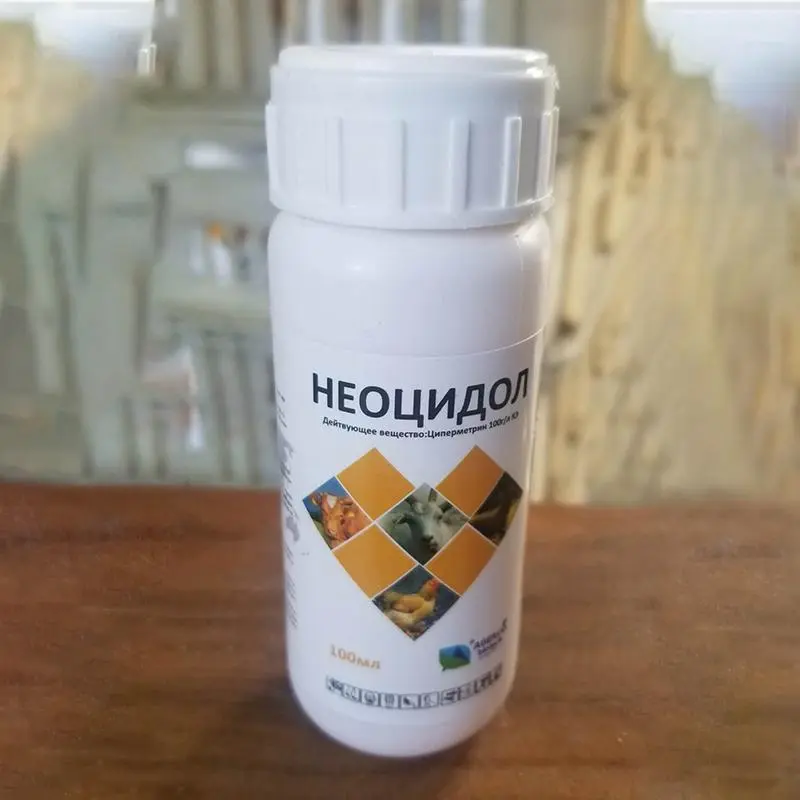
.webp)
